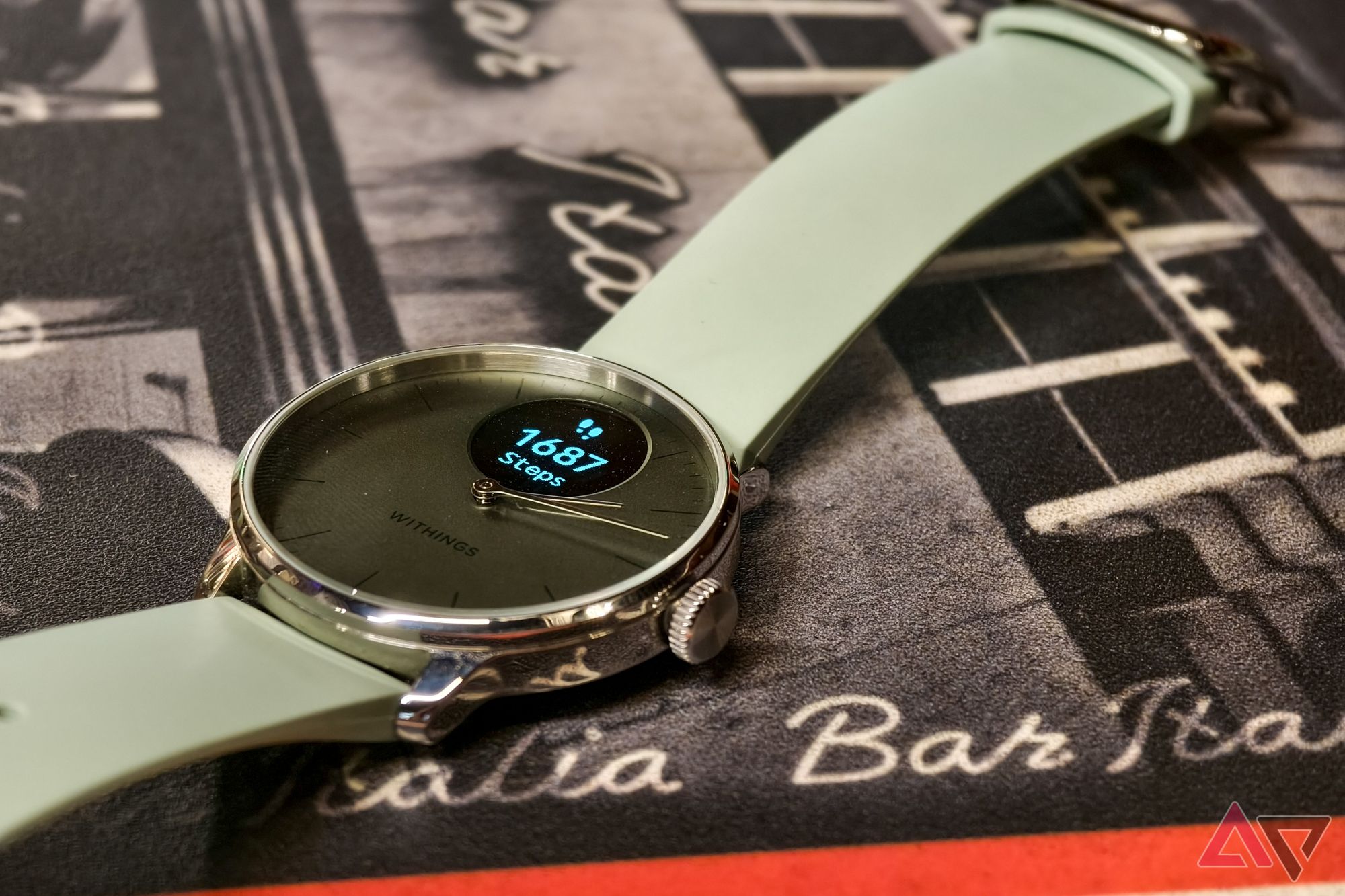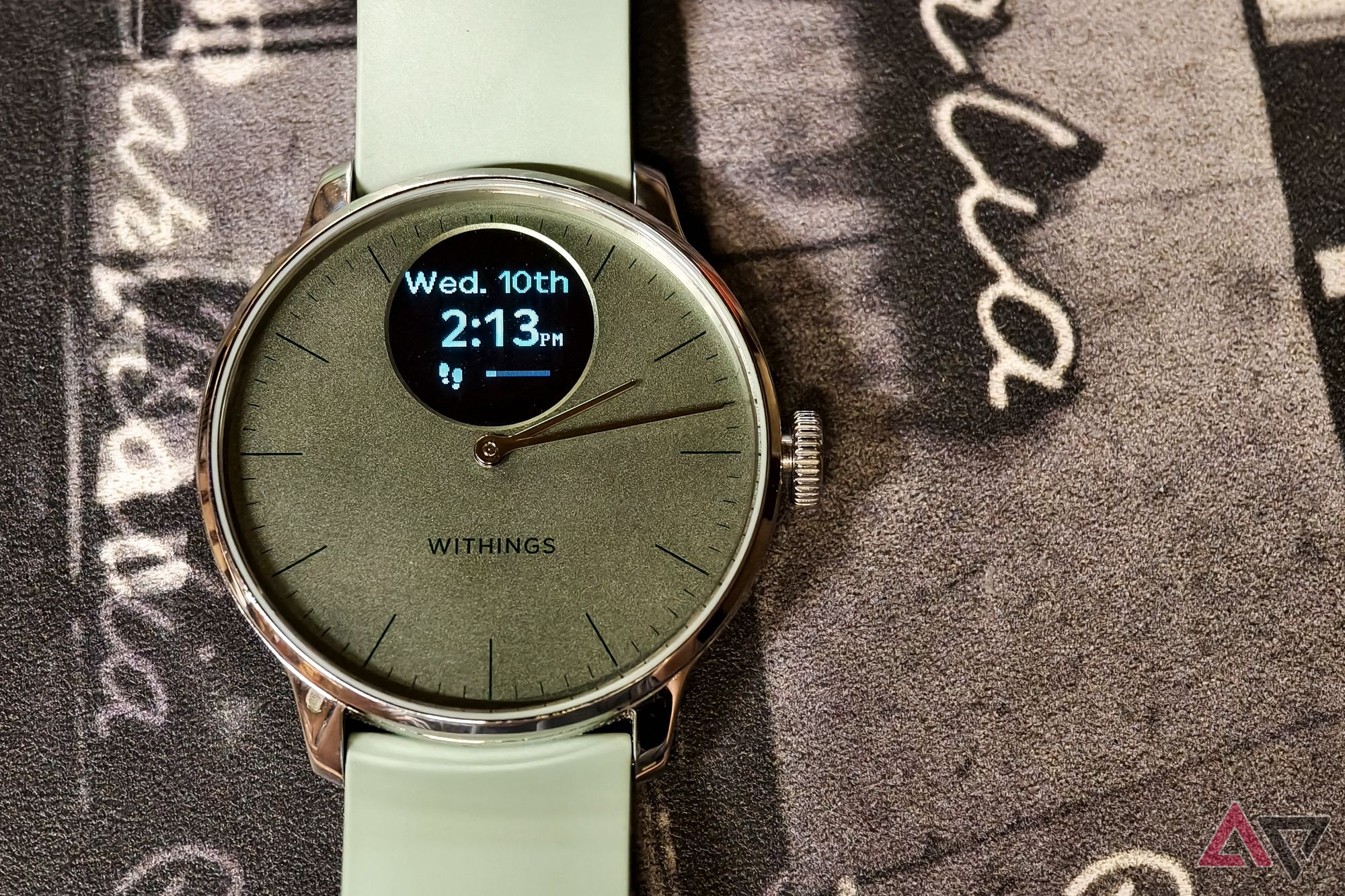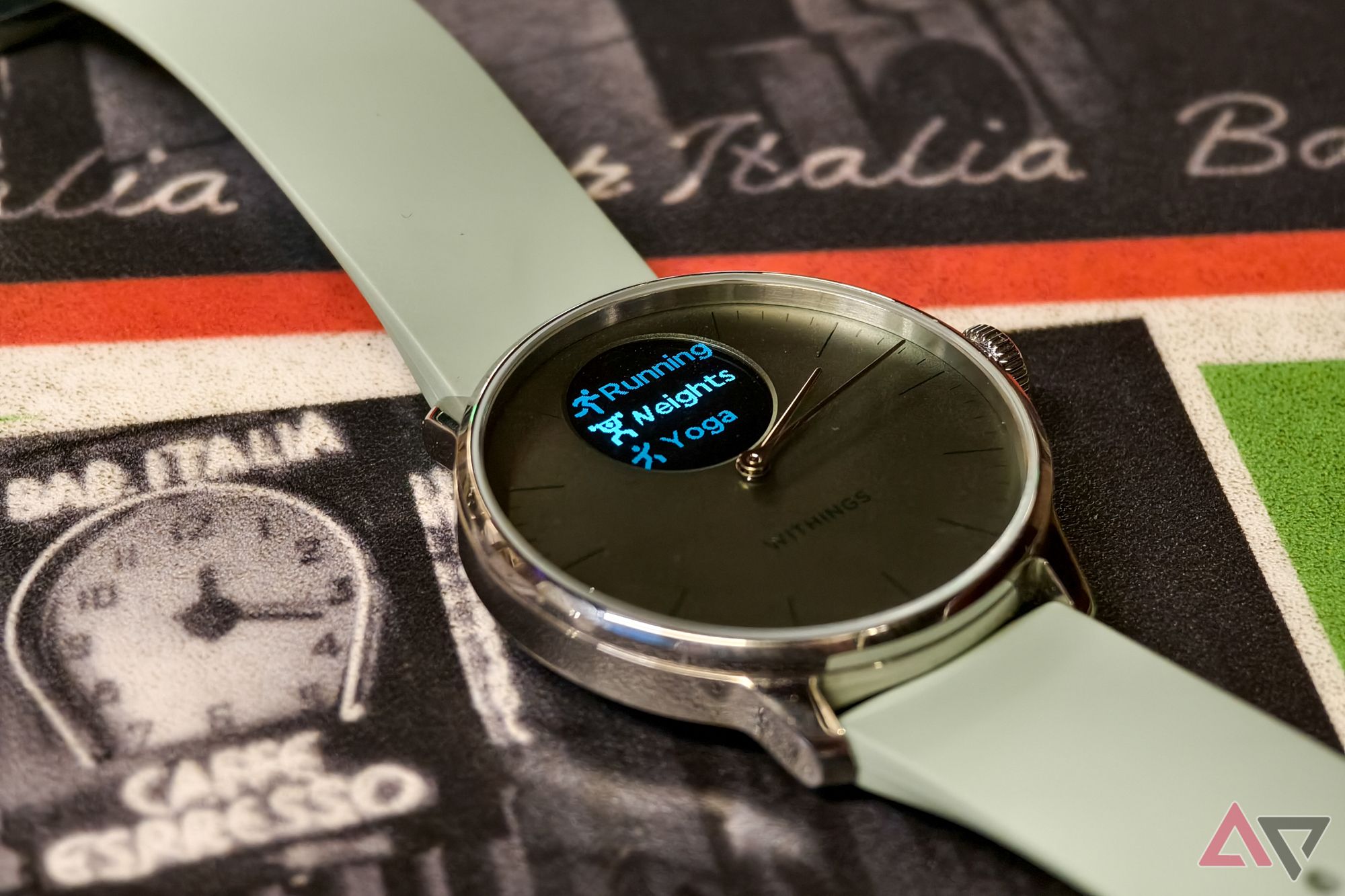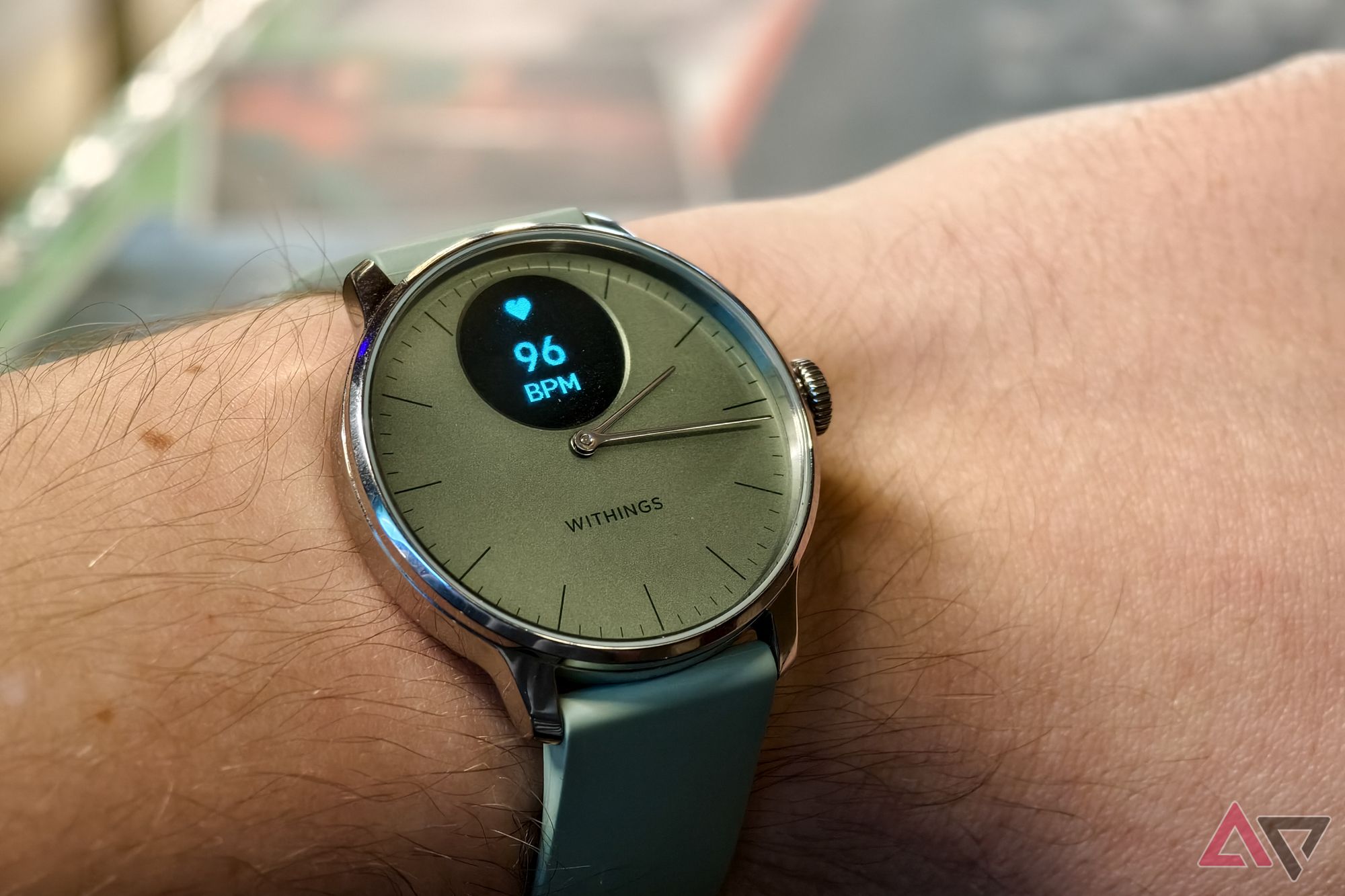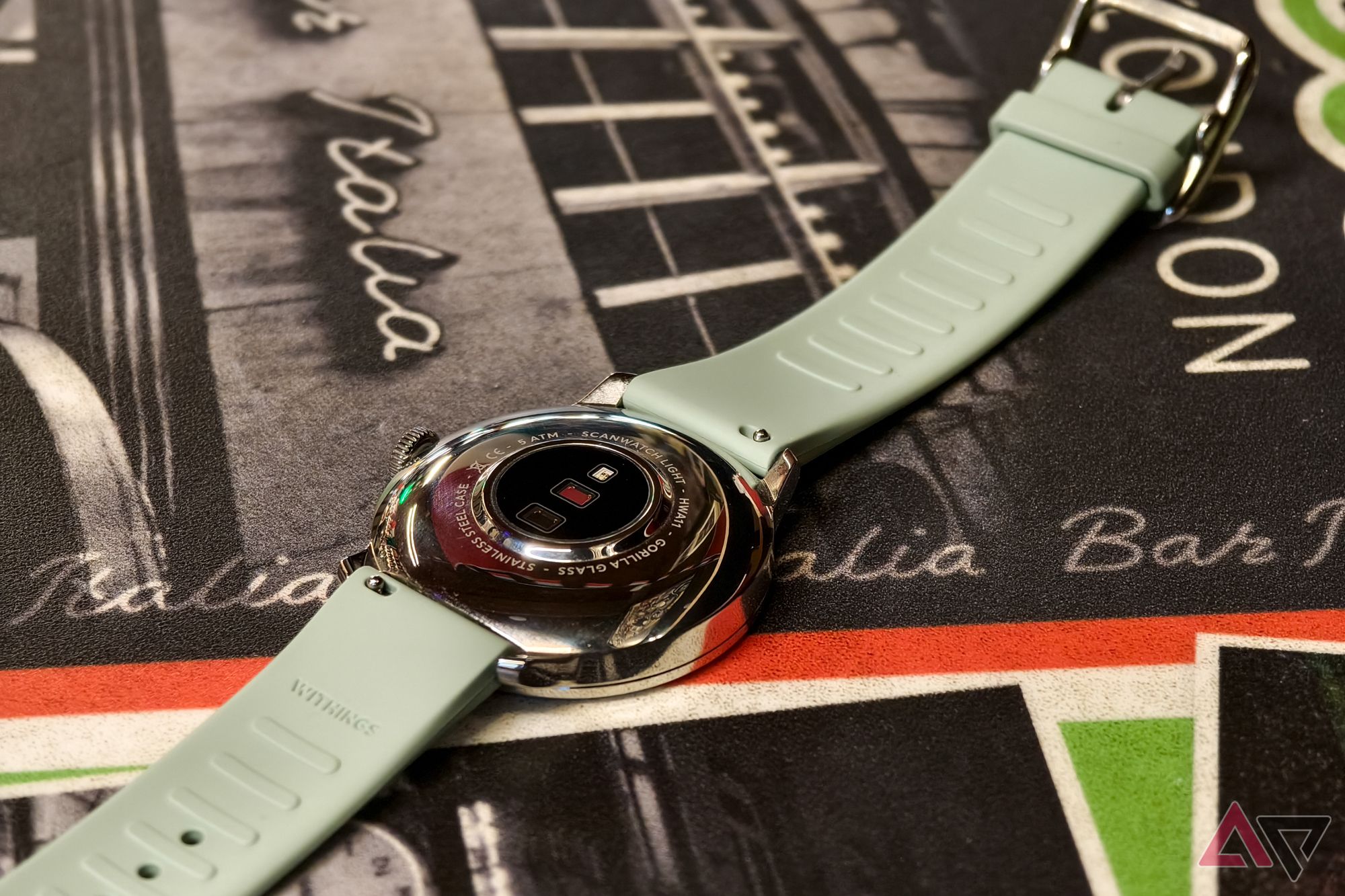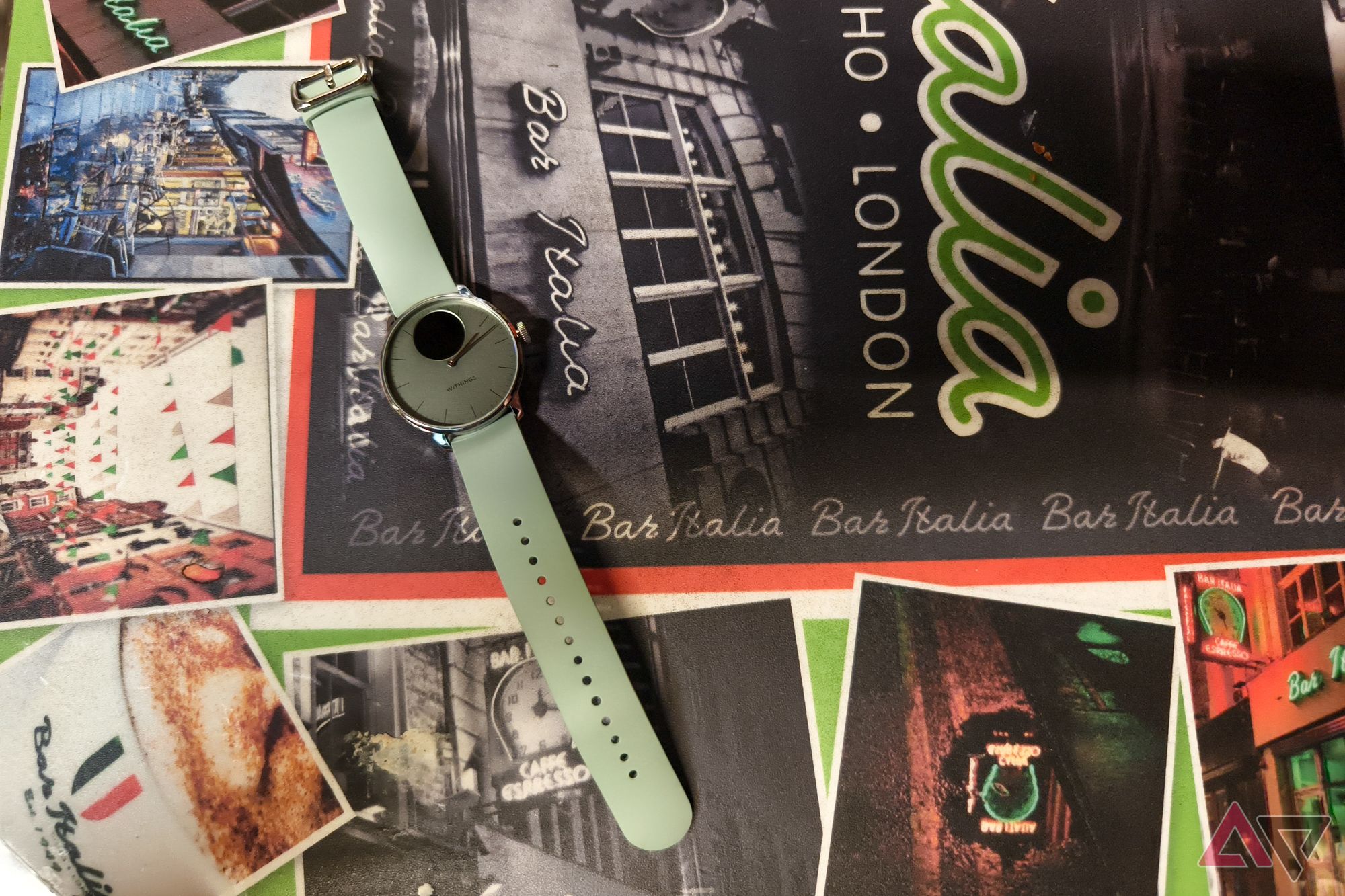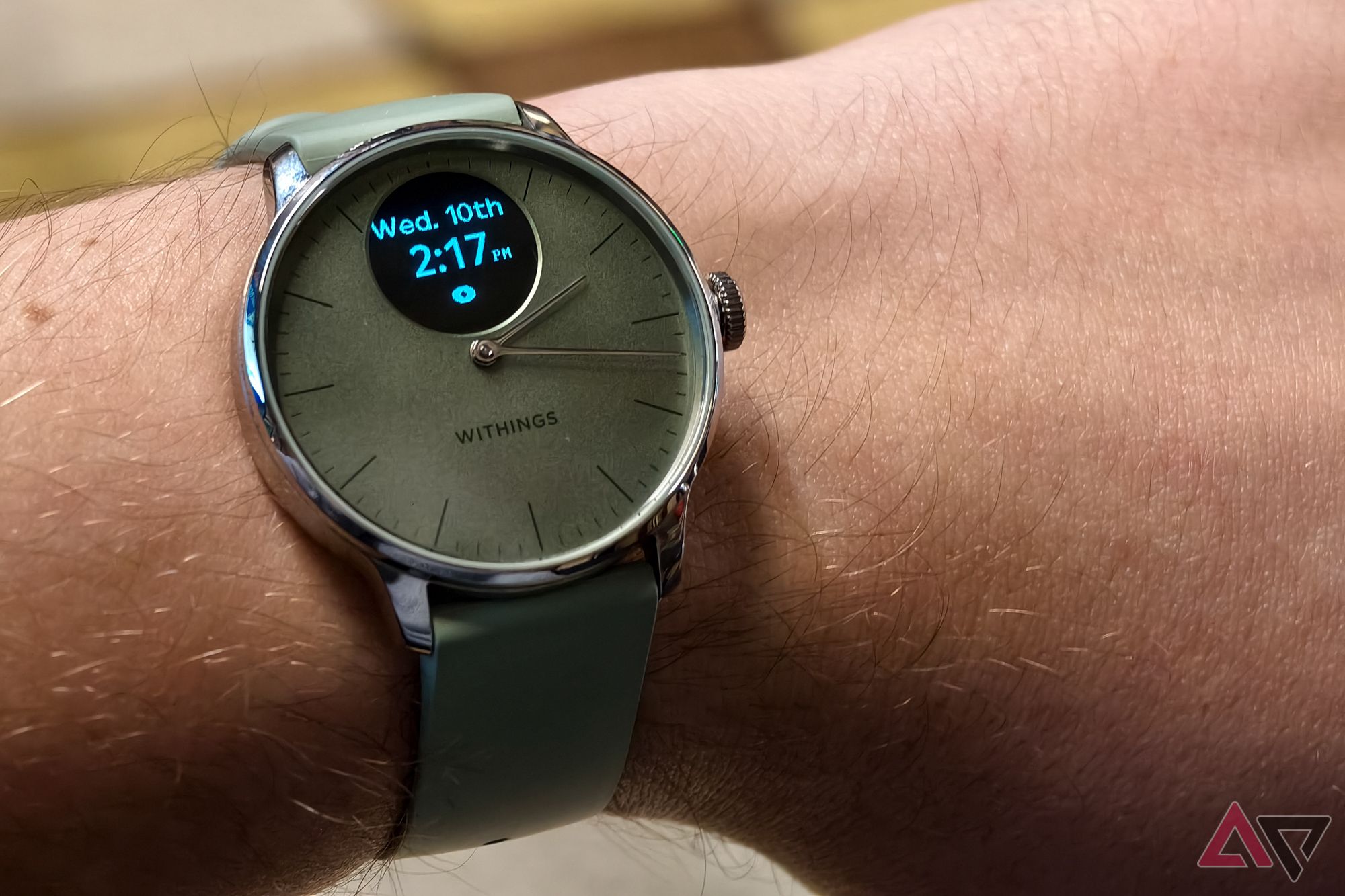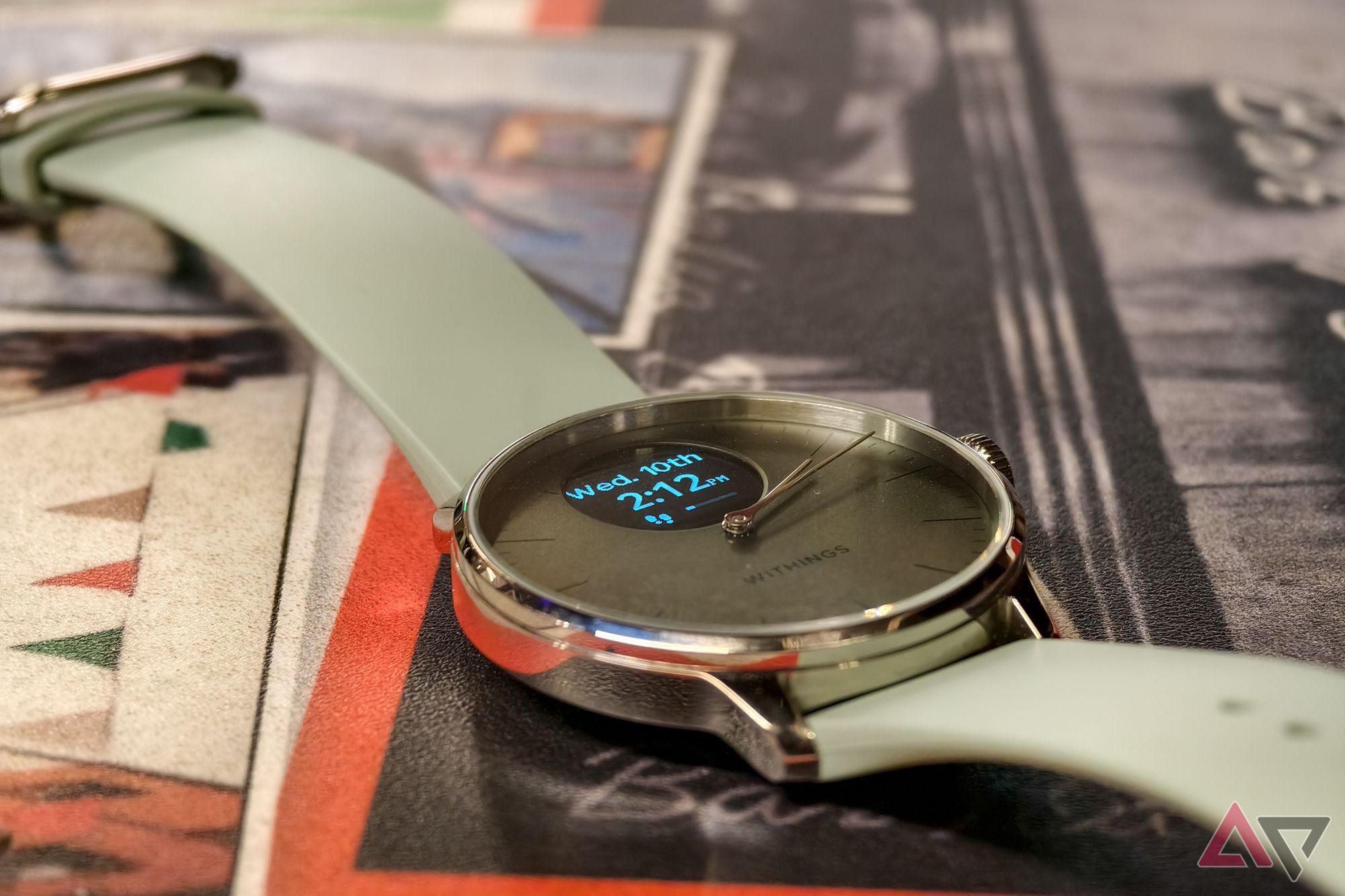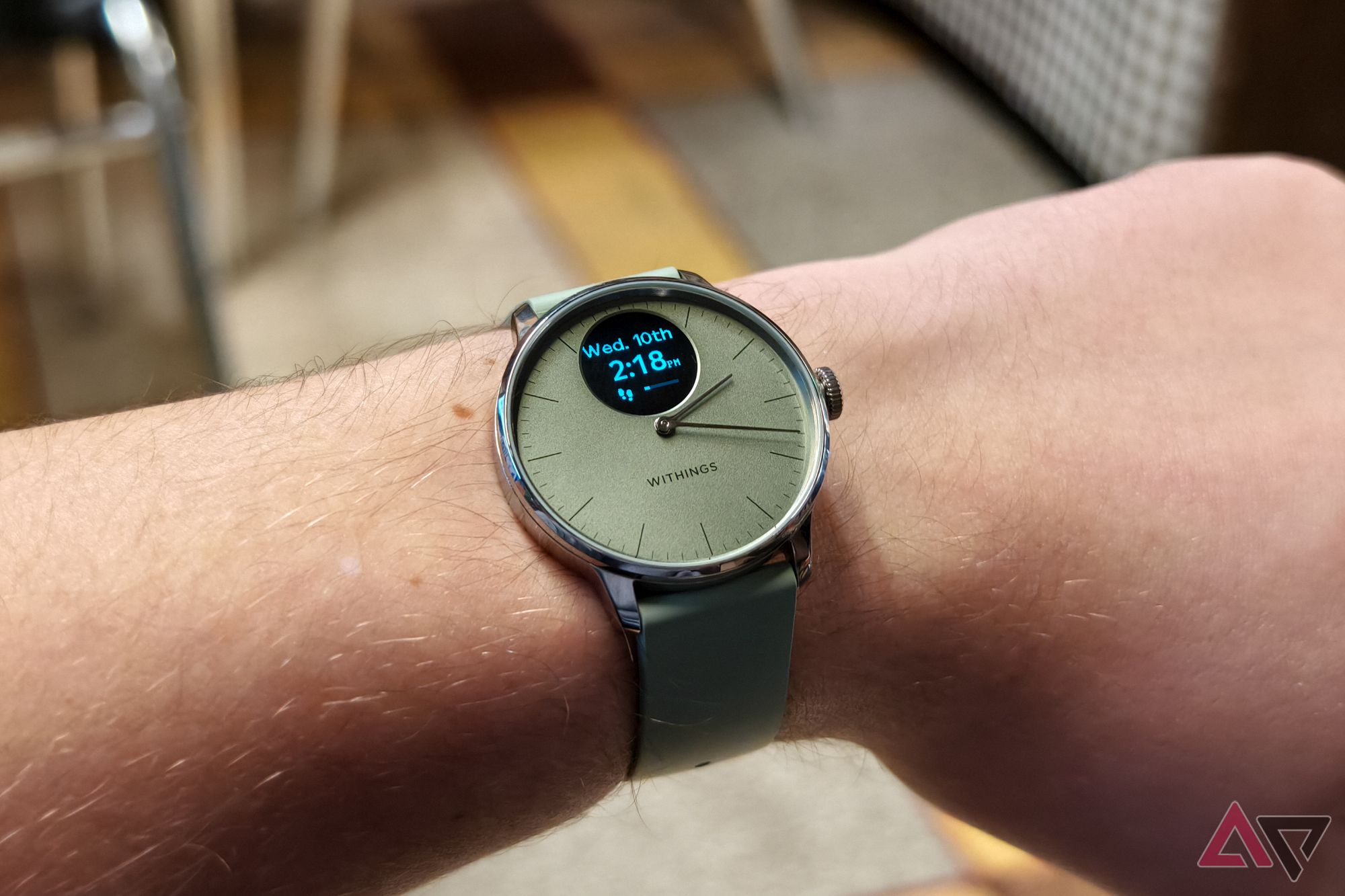The ScanWatch Light is a new addition to Withings’ fitness tracker family and one with a simple pitch: it’s a lighter, smaller, cheaper alternative to the ScanWatch 2 for analog advocates who find the main model a little bulky.
On paper, that makes it perfect for me: I’m a longtime ScanWatch user because I want fitness tracking tech, but I can’t bear to give up the way my traditional timepieces look. I’ve found both the original ScanWatch and its sequel a little chunky, though, and for me, the trade-offs to get a smaller watch in the Light make sense — mostly.
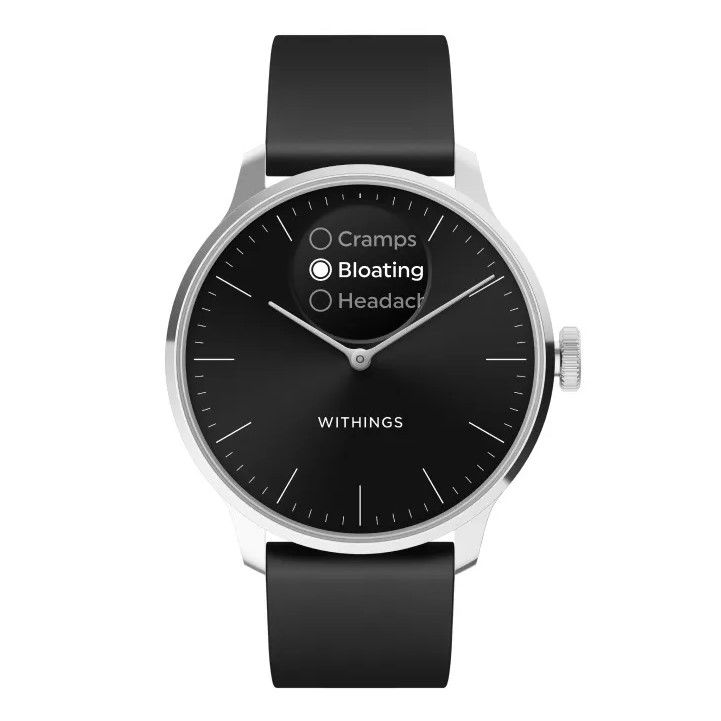
Withings ScanWatch Light
The Withings ScanWatch Light offers the core features of its more expensive sibling at a lower price and in a smaller size. It features a stainless steel case, Withings’ trademark long battery life, and tracking options from heart rate to sleep — but lacks holistic health features like temperature or blood oxygen monitoring.
- Slim, light design
- Attractive analog aesthetic
- Cheaper than other Withings models
- No advanced health features
- Only a single, small display
- Still expensive for a fitness tracker
Price and availability
Withings’ cheapest ain’t that cheap
The ScanWatch Light is available now from Withings itself or retailers, including Amazon, for $250, with additional bands available at an extra cost. That’s $100 less than the ScanWatch 2, but still pricey for a fitness tracker with no real smartwatch features.
The Light is only available in one size, 37mm, but does come in five finishes: Blue and Sand, which feature a gold finish on the stainless steel body; or Green, Pearl White, and Black, which stick to a silvery color. The included silicon band also changes color along with the face.
Specifications
- Case Material
- Stainless steel
- Case size
- 37mm
- Colors
- Black, Pearl White, Sand, Blue, Green
- Display
- Grayscale OLED
- Battery
- Up to 30 days
- Health sensors
- High dynamic range accelerometer, PPG
- Price
- $250
- Dimensions
- 37mm
- Weight
- 27.1g
- Display resolution
- 282ppi
- IP Rating
- 5 ATM
- Cellular connectivity
- No
- Wi-Fi connectivity
- No
- Bluetooth
- Bluetooth LE
Design and display
Smaller, slimmer, lighter, simpler
Let’s start with the basics. The ScanWatch Light looks, for the most part, pretty similar to the ScanWatch and ScanWatch 2. It’s a circular, analog watch with a single button — a rotating crown — and a small circular screen embedded in the top half of the screen. Unlike its bigger siblings, there’s no secondary dial or display below — everything is contained in the one small screen.
The rest of the face is minimalist, with only lines to mark the time. There are minute and hour hands, but not one for seconds, and unlike the ScanWatch 2, neither is luminescent to read in the dark. They do at least move to the 10 and 2 positions when the screen is active so that they won’t block your view.
The smaller watch face brings with it size reductions all round. This is thinner and lighter than Withings’ other watches, especially since it has flat rather than domed Gorilla Glass on its face. All that makes it all-round more comfortable to wear, though it still runs thicker than similarly sized analog watches from the likes of Daniel Wellington.
Durability is the same as that of other models, with a 5ATM rating. That means you can use this to track swimming, and won’t have to worry about a little sweat or rain causing problems. I don’t even take it off for the shower and haven’t had any issues yet.
The monochromatic OLED display is similar to other ScanWatches, too, but without a separate step count dial below; you’ll have to make do with tracking steps on the main screen, too — included in a compact progress bar below the time on the default screen.
This display is always the most divisive part of the ScanWatch line: you’ll either love it for being small enough to ignore or hate it for being too small to show much information. I fall firmly into the former camp. It’s easy to use the crown to scroll through screens and monitor key metrics like heart rate and steps, start a workout, or even check simple phone notifications.
If you’re coming from a fully-fledged smartwatch, this will feel undeniably basic and perhaps even limiting, but then that’s sort of the point. If you want a smartwatch, buy a smartwatch; if you want an old-school timepiece that’ll track your workouts too, buy this.
Features and software
No-frills fitness tracking
Along with the smaller size, the ScanWatch Light is also stripped back in its health-tracking features, though it still packs the essentials. As already mentioned, you can expect the basic step count and heart rate tracking. You can also track over 40 workouts — including, unexpectedly, ‘Gaming’ — and can set your own custom shortlist of eight to trigger quickly from the watch itself, with the remainder only accessible from the app. Walking, running, cycling, and swimming can all also be detected automatically.
Workout tracking itself is simple: heart rate, active minutes, estimated calories burnt, and distance, pace, and elevation if you let it sync up to the GPS in your phone — there isn’t one included in the watch itself.
Sleep monitoring is also supported, netting you an overall quality score and tracking your sleep stages, duration, and any breathing disturbances, which can be a sign of sleep apnea. Finally, there’s also cycle tracking, which I’ve been unable to test.
You won’t get the advanced health features found in the other ScanWatches. That means no ECG measurement, heart AFib detection, or blood oxygen monitoring. There’s also no sign of the temperature checks found in the recent ScanWatch 2. That means this won’t be as suited to those with genuine worries about their heart health or certain other medical issues, and it will be a better bet for healthy users just wanting to monitor day-to-day activity and workouts.
You also won’t get many of the features found on other fitness trackers or smartwatches. You can’t listen to music from the ScanWatch Light or make contactless payments. The smartest it gets is displaying notifications from your phone, which will scroll slowly across the home screen. I like this for WhatsApp messages, but I prefer to deactivate pretty much everything else.
You’ll also notice that Withings offers a paid subscription service, Withings+. The good news is that you really don’t need to worry about it: none of the watch’s tracking features are behind the paywall. All that a subscription gets you is extra insights and motivational plans and programs — useful for sure, but far from essential and very much an optional extra. If you’re tempted, it’s $10 monthly or $100 for a whole year.
All of this and the watch’s core settings are handled in the Withings app. This is one of the best, with a clean, simple UI and straightforward design. If you pick up other Withings gear, like a smart scale or its dedicated sleep tracker, the data will all neatly combine here, and you can also sync it up with the likes of Google Fit, Strava, or Samsung Health.
Battery life
Bad for a Withings, great for anything else
Remember when I said I mostly thought the ScanWatch Light’s trade-offs make sense? Here’s the caveat, albeit a pretty minor one.
Withings’ full-size ScanWatches have exceptional battery life, lasting up to 30 days on a single charge, and more like two weeks with typical usage. The company claims the same 30-day potential with the Light, but in practice, I’ve found it falls far short of that and seems to run for a week or so before a charge is required.
That’s using the watch’s automatic brightness feature, but using ‘Quicklook’ — which wakes up the screen when you turn your wrist to look at it — and setting the display to stay active during workouts, which in my case are a few times a week. Turn those two settings off, and I bet the battery will run for longer, but 30 days does feel like a stretch.
Now, in fairness to Withings, a week’s battery life is nothing to sniff at. It’s still days more than you’ll get from a proper smartwatch and comfortably longer than most equivalent fitness trackers. Charging once a week is hardly arduous, but it is definitely more frequent than you’d expect from any of the company’s other models and takes a couple of hours each time.
The charger itself is custom but compact. It’s a single-piece plastic clip, which feels more cheap’ n’ cheerful than the extending charger shipped with the ScanWatch 2, but now I’m really nitpicking.
Competition
The questions you really need to ask are whether you’re willing to give up on a little functionality for the sake of the analog aesthetic at all and whether you prefer the Light’s smaller form factor — with its corresponding battery reduction — or are happy with a slightly larger model.
If the aesthetic isn’t a must-have, then simple fitness trackers from Fitbit can deliver the same tracking as the ScanWatch Light for less, while the Xiaomi Smart Band 8 even hits similar features while coming in below $100.
If you’re set on a ScanWatch, bear in mind that the ScanWatch 2 comes in a pair of sizes, and its 38mm model isn’t that much bigger than the Light. So, if compactness is your concern, you may be happier paying $100 more for that model with extra features at a similar size. If you prefer a bigger watch, the 42mm ScanWatch 2 or the diving watch-styled ScanWatch Nova are your options.
For another minimalist option, consider a smart ring. With no screen, these are as unobtrusive as it gets, but you will generally have to pay for the privilege.
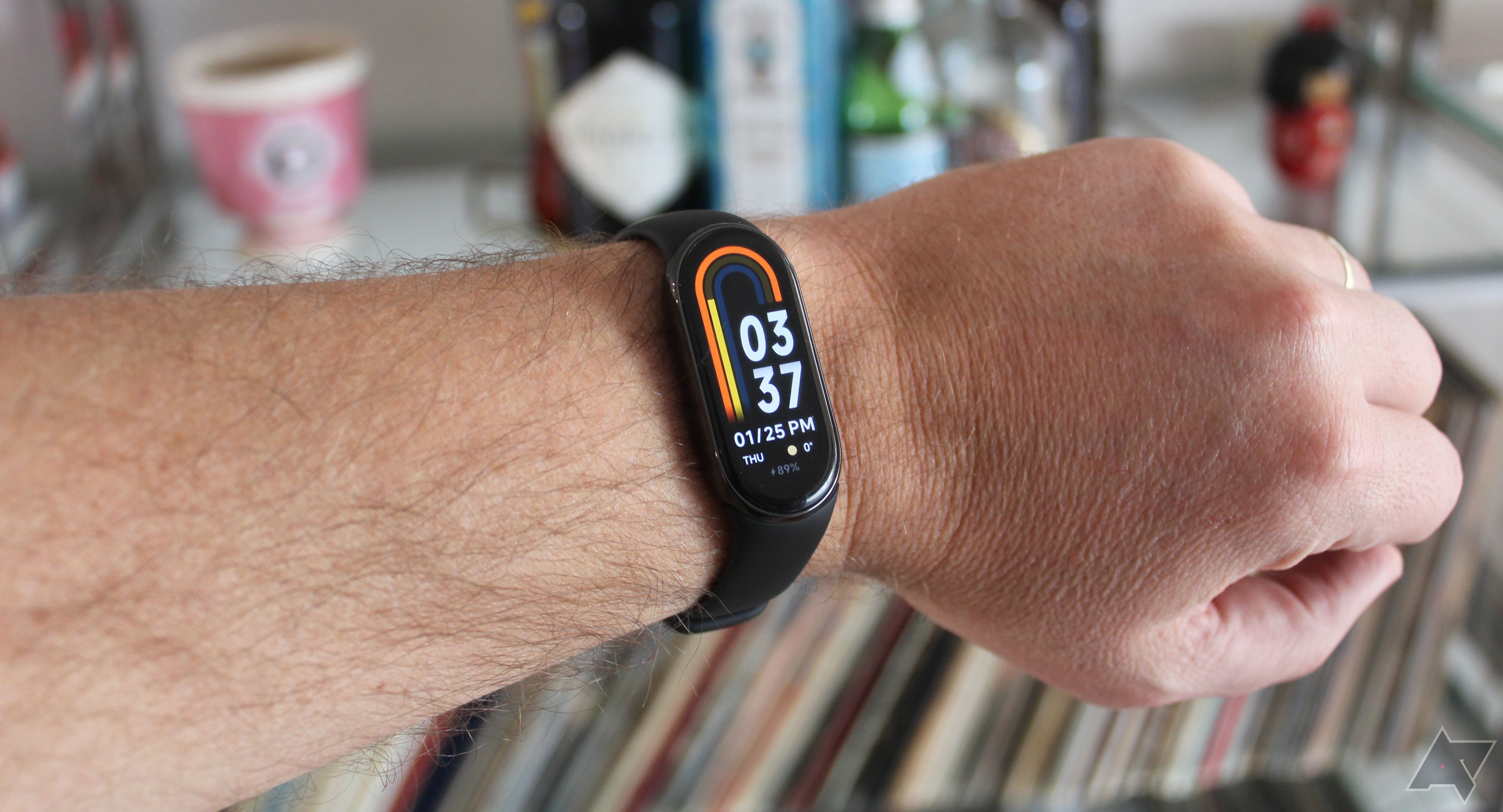
Xiaomi Smart Band 8 review: Fitness tracking on a budget
This is a lot of fitness band for just $50
Should you buy it?
Despite the ‘Light’ in the name, the ScanWatch Light is arguably the most mainstream of Withings’ watches.
Let’s face it: most of us don’t actually have to worry too much about ECG, AFib, and temperature tracking. For those who do, the ScanWatch 2 leads the way in health tracking, but the Light delivers on the basic fitness features that people use most.
Like other Withings watches, you’re effectively paying extra for the aesthetic, and with the stripped-back feature set, that’s more true here than ever before. But few fitness trackers look this good, and this is now the cheapest way to get the Withings look and the most comfortable to boot.

Withings ScanWatch Light
The ScanWatch Light is a back-to-basics take on Withings’ analog fitness trackers. Buy it if you love the look of a classic watch and prefer when they run on the smaller side, but be sure you’re happy with only the standard set of fitness features — none of Withings’ more advanced health tools are included here.
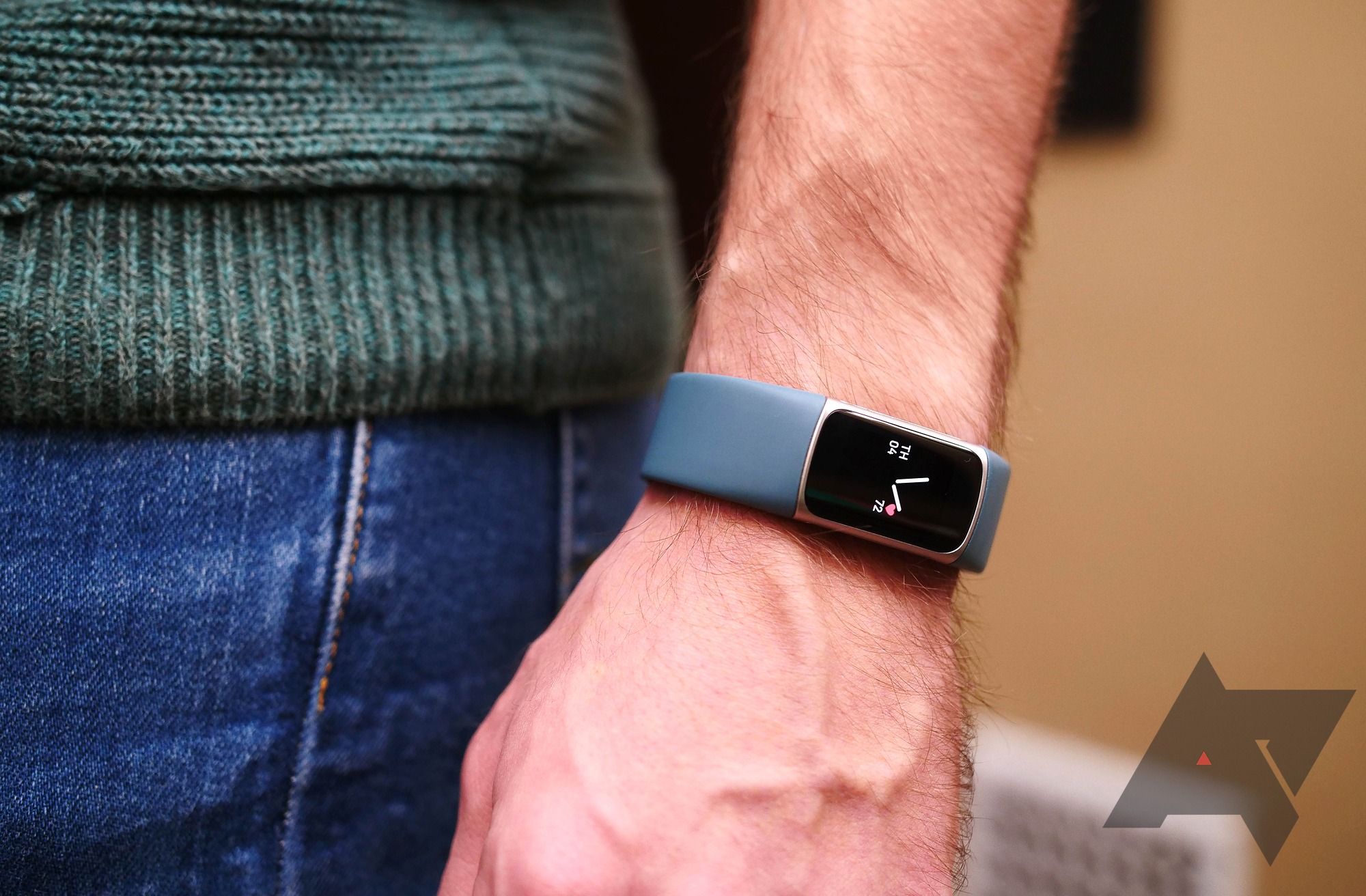
Best fitness trackers in 2024
The top tech to track both your fitness and health in one handy device
Source link

